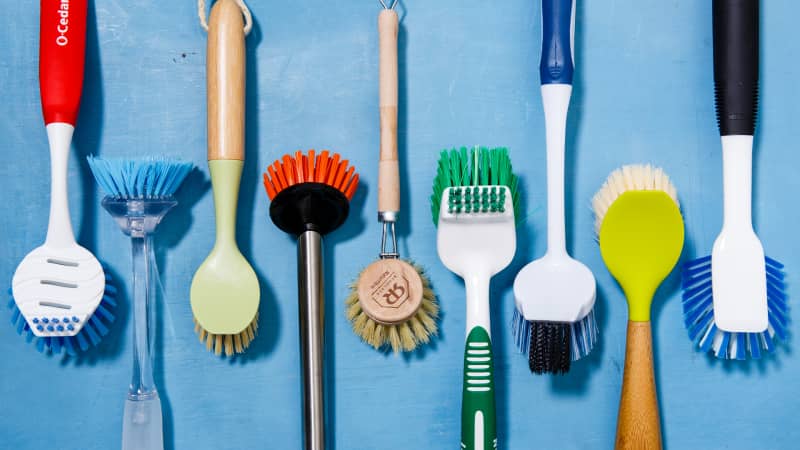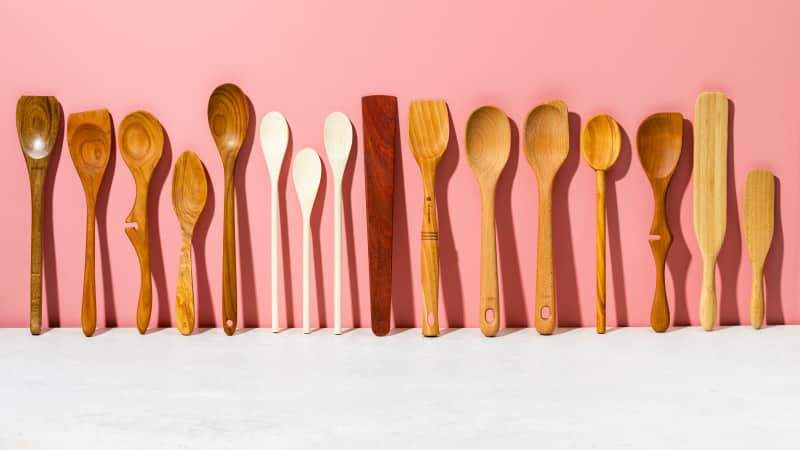Wrestling ginger fibers out of your rasp grater when you need it to zest lemons isn't just annoying—it can set dinner back. Or what finding that your pastry brush is still greasy from melted butter just when you need it to paint egg wash over pie crust?
6 Genius Tips for Cleaning Kitchen Tools
Published Nov. 4, 2021.

We’ve got solutions to easily removing stubborn messes and odors from core kitchen gear, so they’re clean and pristine when you need them.
Rasp Grater
Wash ASAP
Immediately after use, rinse the blade under warm water and then run a wet sponge along the grating surface, moving toward the handle (moving away from the handle will cause bits of sponge to get caught in the teeth). If food dries out and bonds itself to the grating surface, soak the grater before proceeding.

Pastry/Basting Brushes
Salt Bath
After washing the dirty brushes, rinsing them well, and shaking them dry, place the brushes, with the bristles pointing down, into a cup and fill the cup with coarse salt until the bristles are covered. The salt draws moisture out of the bristles and keeps them dry and fresh between uses.

Wooden Spoons
Scrub with baking soda paste
Alkaline baking soda neutralizes odor-causing acids, and since it is water-soluble, it is drawn into the wood along with the moisture in the paste. For every tablespoon of baking soda, use 1 teaspoon of water.

Sign up for the Cook's Insider newsletter
The latest recipes, tips, and tricks, plus behind-the-scenes stories from the Cook's Illustrated team.
Wire Cooling Racks
Soak in baking sheet
Most sinks aren’t large enough to hold a rack when flat, so we soak it in a rimmed baking sheet. Squirt dish soap into the sheet and fill it with warm water. Invert the rack in the sheet and soak until all food particles are loosened. Scrub the rack gently in the direction in which the wires run, widthwise on top and lengthwise on underside.
→Buy our winning wire rack and our winning rimmed baking sheet.

Box Grater
Grate stale bread
Stale bread is hard enough to remove stuck-on food and dry enough that it won’t leave behind any sticky residue of its own. Grate the bread over a plate to catch the crumbs.

Wooden Salad Bowls
Warm in low oven or sand and oil
Method 1: To remove sticky buildup, adjust oven rack to middle position and heat oven to 275 degrees. Line rimmed baking sheet with aluminum foil or parchment paper and set wire rack in sheet. Place bowl upside down on rack. Turn off oven (don't forget this step or bowl might burn) and place sheet in oven. Within minutes, oils will start to bead on surface of bowl. After 1 to 2 hours, oils will run off bowl and onto sheet. Once bowl appears dry, remove sheet from oven and wipe down bowl with paper towels to remove any residue. (If bowl is still sticky, repeat baking process.)
Method 2: “Refinish” the wood by rubbing the surface with sandpaper and coating it with mineral oil.




